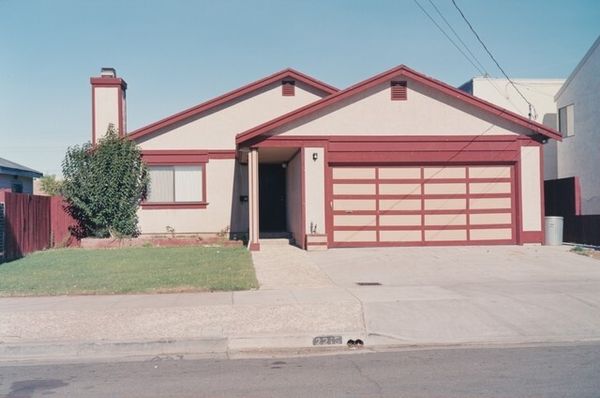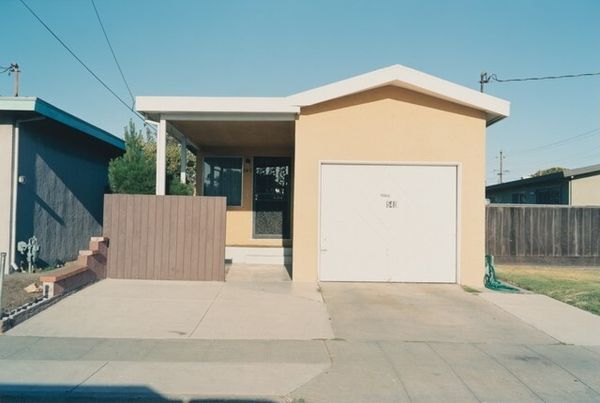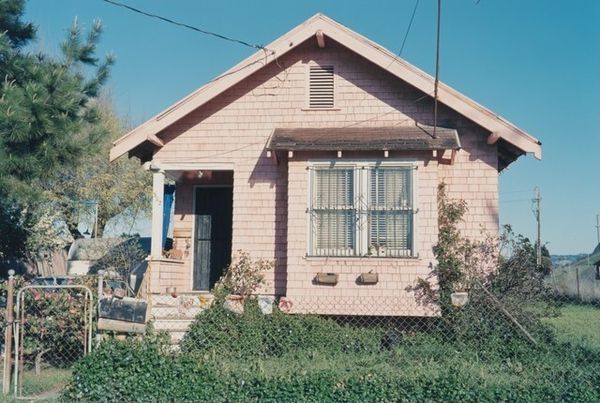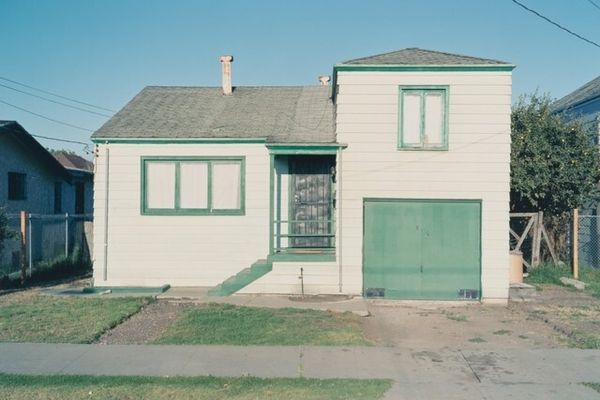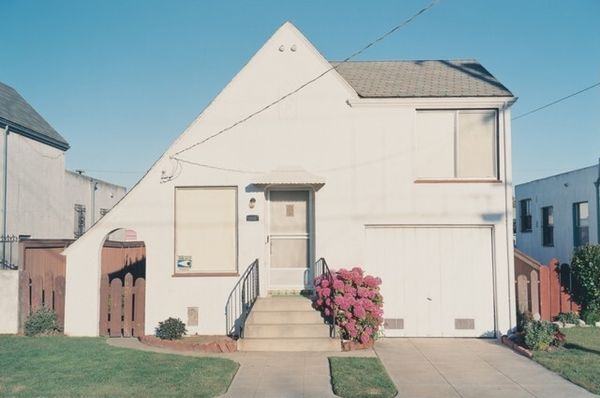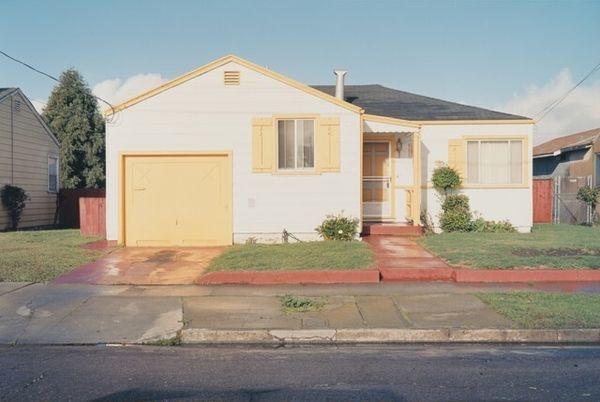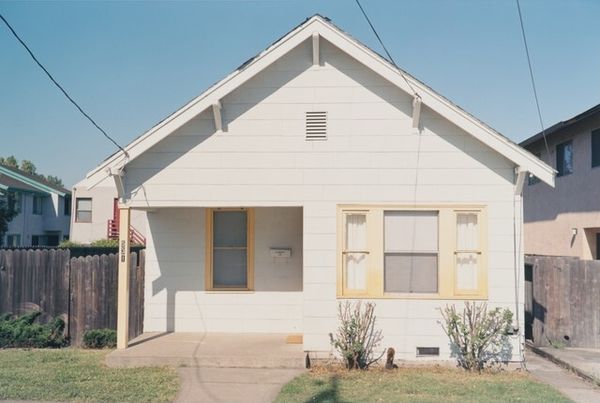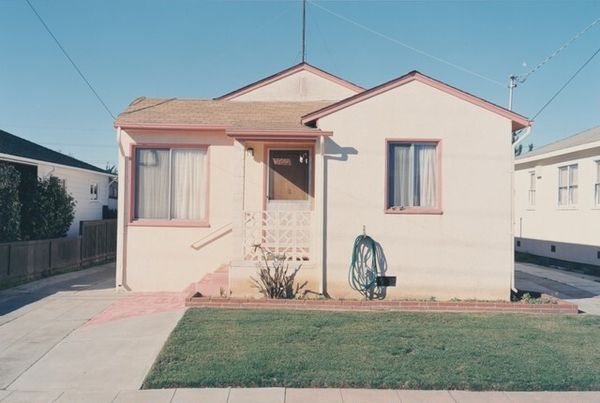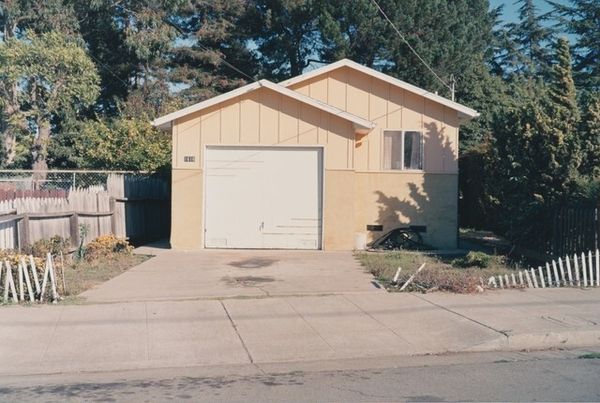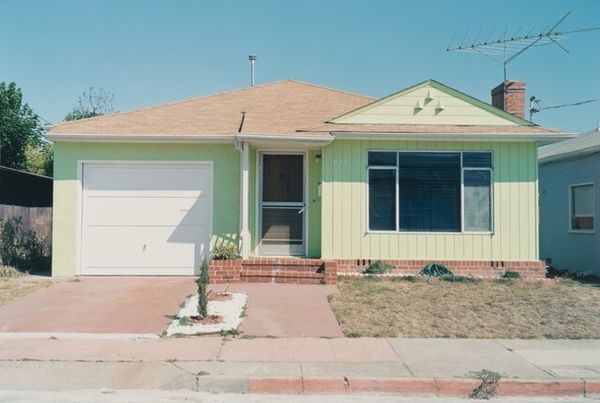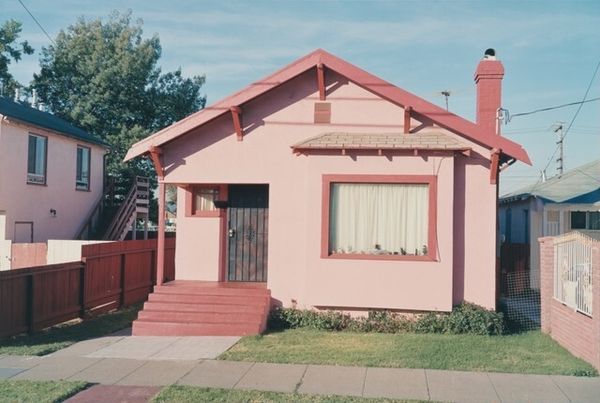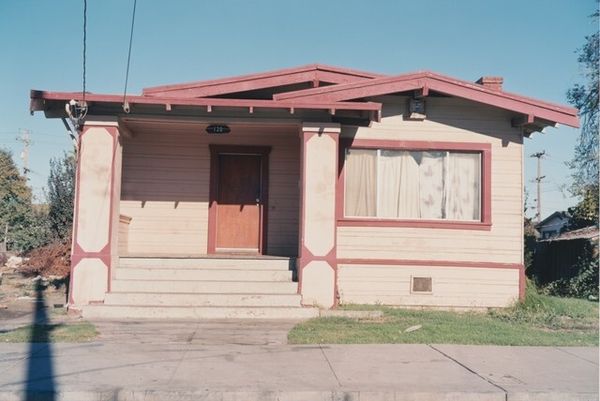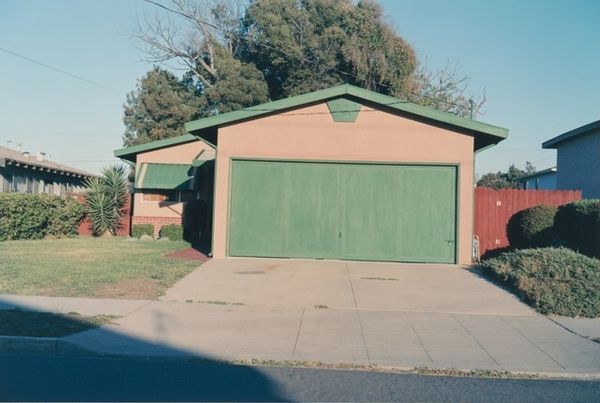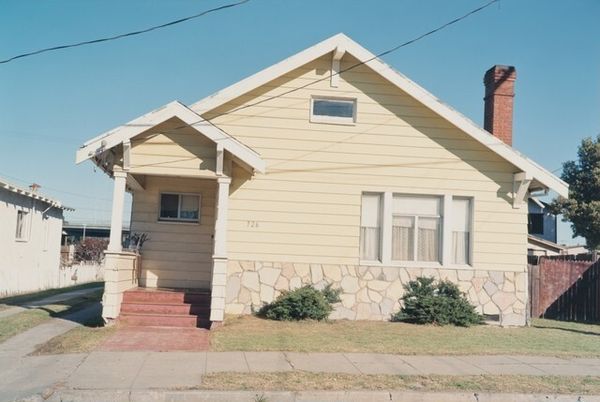
photography
#
street view
#
landscape
#
architectural photography
#
street-photography
#
photography
#
realism
Dimensions: image: 15.24 × 22.86 cm (6 × 9 in.) sheet: 20.32 × 25.4 cm (8 × 10 in.)
Copyright: National Gallery of Art: CC0 1.0
Curator: Here we have Henry Wessel’s photograph, "Real Estate #91517," taken in 1991. Editor: My first impression is the muted color palette – soft yellows, pale blues. It’s somehow both comforting and unsettling. The composition, front and center, demands our attention yet feels strangely vacant. Curator: It's interesting you say "vacant." Wessel often photographed ordinary scenes, like this suburban home, without any people. The emptiness prompts us to consider the social implications of these environments. In that regard, what cultural memories might the image trigger? Editor: Well, there’s a distinct visual language here, instantly recognizable as American suburbia. The trimmed lawn, the decorative curtains in the window… these speak of a pursuit of the "American Dream"—an outward display of stability and aspiration. However, those protective window decorations hint at an insecurity, a subconscious vulnerability to an outside threat, perceived or real. Curator: Precisely! And that's reflected throughout American cultural history. Architectural photography, in this style, takes on new weight when considering economic booms and bursts in property development and home-ownership across decades. It suggests prosperity for all but that isn't quite right, is it? Editor: No, not at all. These kinds of photographs document both what exists and what is omitted from these scenes of affluence. The image reminds me that there's more to American identity than what's offered at face value. Curator: Speaking of faces, this presentation could remind us about performative aspects. If one regards property value and curb appeal as signals, there's much encoded into how the windows, for example, have been arranged. Editor: The small details really amplify that tension. A simple stone cladding and neat yellow sidings represent the economic investment as a marker, which also invites questions about authenticity. It leads us back to questions about real vs imagined American desires, both collectively and individually. Curator: Indeed, even the title implies a commercial element. "Real Estate." Stripped of context, the name serves almost as a warning. Overall, Wessel's work reminds us that every image carries a message, whether intentional or not. Editor: Absolutely. It’s a reminder that these seemingly neutral snapshots reveal deeper cultural narratives, and invite scrutiny. I find myself thinking differently about similar scenes now.
Comments
No comments
Be the first to comment and join the conversation on the ultimate creative platform.
